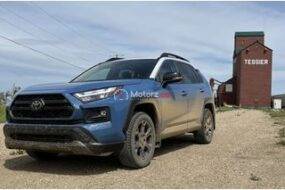The advent of autonomous vehicles (AVs) is poised to revolutionize transportation, and Burlington, with its unique blend of urban and suburban characteristics, stands at the forefront of this transformation. As technology evolves and public interest grows, understanding how AVs will shape the future of driving in Burlington becomes essential.
Understanding Autonomous Vehicles
What Are Autonomous Vehicles?
Autonomous vehicles are self-driving cars equipped with advanced sensors, cameras, and artificial intelligence (AI) that allow them to navigate without human intervention. These vehicles can interpret sensory data to identify objects, make decisions, and travel safely from one location to another.
Levels of Automation
The Society of Automotive Engineers (SAE) defines six levels of vehicle automation:
– Level 0: No automation; human drivers control everything.
– Level 1: Driver assistance; systems may assist but do not take full control.
– Level 2: Partial automation; vehicles can control steering and acceleration but require driver supervision.
– Level 3: Conditional automation; vehicles handle most driving tasks but expect human intervention when necessary.
– Level 4: High automation; vehicles operate independently in specific conditions without human input.
– Level 5: Full automation; no need for a driver under any circumstances.
Burlington’s future may see an integration of these varying levels as technology progresses.
The Current State of Autonomous Vehicles
Global Trends in AV Development
Around the world, companies like Tesla, Waymo, and Cruise are leading the charge toward fully autonomous driving. These developments highlight a growing trend towards increased safety, reduced traffic congestion, and improved mobility for all citizens.
Local Developments in Burlington
In Burlington specifically, local government initiatives aim to explore AV technology through pilot programs and partnerships with tech firms. This proactive approach indicates a commitment to embracing innovation while addressing potential challenges associated with AV deployment.
Benefits of Autonomous Vehicles
Enhanced Safety on Roads
One of the primary advantages of AVs is their potential to significantly reduce accidents caused by human error. With AI-driven decision-making capabilities and real-time data processing, autonomous vehicles can respond more quickly than humans in emergency situations.
Reduced Traffic Congestion
AVs communicate with each other via vehicle-to-vehicle (V2V) technology. This communication allows for optimized traffic flow patterns that could alleviate congestion commonly experienced during peak hours in Burlington’s busy areas.
Increased Accessibility
For individuals unable to drive due to age or disability, AVs offer newfound independence. Automated ride-sharing services can provide accessible transportation options throughout Burlington.
Challenges Facing Autonomous Vehicle Adoption
Regulatory Hurdles
While the promise of AVs is enticing, regulatory frameworks must evolve alongside technological advancements. Laws governing insurance liability, road usage rights for AVs versus traditional vehicles, and safety standards need thorough examination before widespread adoption occurs.
Public Perception
Public acceptance remains a significant barrier. Many people are hesitant about relinquishing control over their vehicle or fear potential malfunctions. Education campaigns highlighting the benefits and safety measures associated with AV technology will be crucial in shifting perceptions.
The Future Landscape: How Will Burlington Adapt?
Infrastructure Modifications
To accommodate autonomous vehicles effectively, Burlington may need infrastructure upgrades such as dedicated lanes for AVs or enhanced traffic management systems capable of interfacing with connected cars. Smart traffic lights could optimize flow based on real-time data from surrounding vehicles.
Collaborations Between Government and Tech Firms
Strategic partnerships between local government bodies and tech companies specializing in autonomous technologies will pave the way for successful implementation. Collaborative projects could include testing zones where residents can experience AV rides firsthand while providing valuable feedback on performance aspects they find important.
Real-Life Applications: Pilot Programs in Action
Burlington has already initiated pilot programs exploring various applications for autonomous technologies:
Shuttle Services
Autonomous shuttle services have been tested within designated areas offering free rides around popular destinations like parks or shopping centers—providing convenience while allowing residents an opportunity to engage directly with emerging technologies without committing fully yet!
Delivery Drones & Robots
As part of an effort toward smart city solutions aimed at improving logistics efficiency across sectors—from food delivery services utilizing drones/robots—to waste management operations employing automated collection methods—these innovations showcase how AV-related technologies extend beyond personal transportation alone!
The journey toward fully realizing autonomous vehicle integration requires collaboration among stakeholders—local governments must work hand-in-hand alongside innovators within private industry sectors—to ensure sustainable growth that aligns community needs!
In conclusion: As we look ahead into this exciting new frontier within transportation—the possibilities presented by autonomous vehicles hold great promise not just economically but socially too! By prioritizing education outreach efforts combined strategic planning around infrastructure development—we can prepare ourselves better embrace change together!
Smart Infrastructure for a Smarter City
As Burlington embraces the future of autonomous vehicles, significant infrastructure changes will be essential. Smart city initiatives that incorporate technology into urban planning can facilitate smoother integration of AVs.
Intelligent Traffic Management Systems
Implementing intelligent traffic management systems can optimize traffic flow and reduce congestion. These systems use real-time data from various sources, including road sensors and cameras, to manage traffic lights dynamically, ensuring that AVs and traditional vehicles move efficiently throughout the city.
Dedicated AV Lanes
Creating dedicated lanes for autonomous vehicles could enhance safety and efficiency. These lanes would allow AVs to operate without interference from human-driven cars, enabling them to maintain optimal speeds and minimize delays.
Economic Implications of Autonomous Vehicles in Burlington
The introduction of AVs is expected to have profound economic impacts on Burlington’s local economy.
Job Creation in New Sectors
While there are concerns about job displacement in traditional driving roles, new opportunities will arise in sectors related to AV technology. Positions in software development, vehicle maintenance, cybersecurity, and data analysis will become increasingly important as the demand for skilled workers grows.
Boosting Local Businesses
With improved transportation options provided by AVs, local businesses may see increased patronage. Enhanced mobility can encourage residents to explore different areas of Burlington they might not typically visit due to parking challenges or limited public transport options.
Environmental Considerations
Reducing Carbon Footprint
One of the key promises of autonomous vehicles is their potential to lower greenhouse gas emissions. Many companies developing AV technology are focusing on electric-powered models which contribute less pollution compared to traditional gasoline-powered vehicles. In Burlington’s efforts toward sustainability, integrating more electric AVs could help achieve environmental goals.
Promoting Shared Mobility Solutions
AV technology lends itself well to shared mobility solutions like ride-sharing services. By reducing the number of individual car trips taken—especially if these rides are pooled—Burlington can further decrease its overall carbon footprint while improving access for all residents.
Social Impacts: A Community Perspective
Enhancing Quality of Life
The advent of autonomous vehicles has the potential to significantly improve quality of life for Burlington residents. With reduced travel times and enhanced accessibility options, individuals can enjoy greater freedom without being burdened by transportation challenges.
Fostering Inclusivity
AVs can play a crucial role in fostering inclusivity within the community. For seniors or people with disabilities who face barriers with current public transport systems, self-driving cars offer independence and ease of movement around town.
Education and Training: Preparing for Change
Educating Residents About Autonomous Technology
To ensure a smooth transition towards an autonomous future, educational programs must be established in Burlington. Workshops and informational sessions can provide insights into how these technologies work and address any concerns citizens may have regarding safety and reliability.
Training Workforce for Future Jobs
As new job opportunities emerge with the rise of AV technology, training programs focused on relevant skills will be vital. Collaborations between local educational institutions and tech companies could create pathways for students entering fields related to AI development, vehicle maintenance, and transportation logistics.
The Role of Policy Makers
Creating Supportive Legislation
Local government officials play a critical role in shaping the future landscape for autonomous vehicles in Burlington. Crafting supportive legislation that encourages innovation while addressing safety concerns is essential for fostering an environment conducive to technological advancement.
Engaging Stakeholders
Engagement with stakeholders—including citizens, businesses, tech companies, and advocacy groups—is vital when developing policies around AV implementation. A collaborative approach ensures diverse perspectives are considered while creating frameworks that benefit everyone involved.
Conclusion:
Burlington stands at a pivotal moment as it navigates the uncharted waters of autonomous vehicle adoption. With careful planning involving infrastructure enhancements, education initiatives, regulatory frameworks, and community engagement strategies—all while keeping sustainability at heart—the city can embrace this transformative technology effectively.
As we look ahead toward this exciting frontier in transportation innovation—where convenience meets cutting-edge advancements—it’s clear that embracing change today will pave the way for a safer, more efficient tomorrow on Burlington’s roads.





